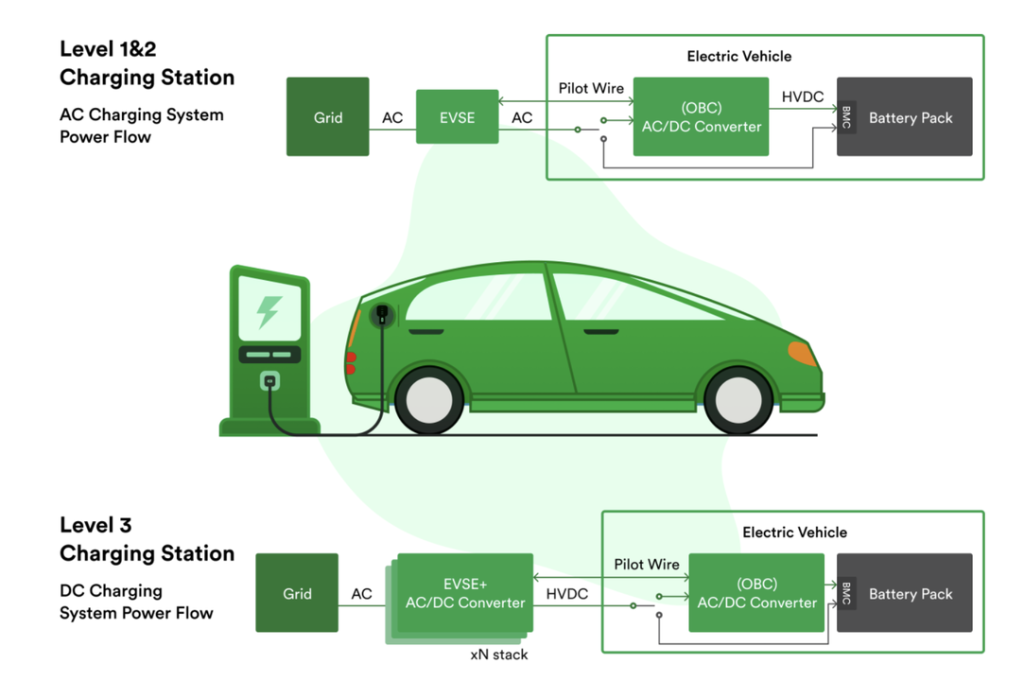Reshaping the automotive landscape – the global shift toward electric vehicles (EVs) has become a reality in recent years.
There is more to this revolution than just automotive manufacturers giving each other a hard time to deliver a better and more convenient option for the public. EV charging stations and their infrastructure certainly play a crucial role in giving this revolution momentum. The public charging infrastructure serves as the lifeline for EVs, and its evolution is poised to redefine transportation as we know it. By 2030, the global EV charging infrastructure market is expected to reach USD 19.67 billion and grow at a compound annual growth rate (CAGR) of 25.5%.
This brings in a lot of opportunities for the OEMs and Product developers willing to work on EV charging station projects. Plus, this also holds the scope of partnerships between car manufacturers for charging facilities by providing a subscription model, and enrolling in an EV Training program can equip professionals with the skills needed to navigate and contribute to this evolving landscape.
The Crucial Role of EV Charging Infrastructure
EVs have emerged as a sustainable and eco-friendly alternative to traditional gasoline-powered cars. However, the successful transition to EVs hinges on the accessibility and convenience of charging stations. This brings us to the heart of the matter: EV charging infrastructure.
Until now, public charging stations are not common, and most EV charging takes place at home. But treating public charging stations like conventional fuel stations is required to raise the EV adoption rate. The lack of a proper charging infrastructure causes range anxiety among EV owners and remains the main reason for people giving second thoughts about replacing conventional IC cars with EVs.
To solve this problem – an unprecedented new joint venture between seven leading global automakers, including – BMW Group, General Motors, Honda, Hyundai, Kia, Mercedes-Benz Group, and Stellantis NV – has come together to provide high-powered charging services in North America.
The network will provide high-powered charging capability, digital integration, appealing locations, various amenities while charging, and use renewable energy to provide an elevated customer experience.
The Scope of EV Charging Infrastructure
The scope of EV charging infrastructure extends far beyond the present. With technological advancements, we can anticipate exciting developments that will reshape how we charge our EVs.
Here are some key considerations for designing an ideal EV charging station:
Fast and efficient charging
The EV charging station should be able to charge vehicles quickly and efficiently, reducing the long wait times at charging stations. Currently, the time has been reduced with DC charging, but there is scope to reduce it further, making it more convenient for the public.
Scalability and future-proofing
The charging station should be designed with scalability in mind so that it can be easily expanded in the future as per the changing infrastructural developments and requirements.
User-friendly and reliable
The charging station should be built so people can assess its features and use it without any confusion. The Payment gateways integrated to the system should also be reliable with a minimal response time.
Cost-effectiveness
EV charging stations are expensive to deploy and operate, which is one reason OEMs worry about them. Reducing these costs will help improve the quality and increase the number of Stations in the future.
Environmental Impact
As renewable energy gains traction, EV charging stations could integrate solar panels and use renewable energy sources. This will reduce the carbon footprint and open the door to sustainable charging solutions.
EV Charging Station Display: The Face of Convenience
HMI (Human-Machine Interface) screen design plays a critical role in ensuring the seamless functioning of EV charging stations. An intuitive and user-friendly interface enhances user experience and encourages EV adoption. The HMI screen allows users to interact with the charging station, monitor charging status, and access relevant information. Creating a universally intuitive design is paramount, as users come from diverse backgrounds.
The EV charging station display is more than just a screen; it’s a portal to a sustainable future. The screen design plays a critical role in ensuring the seamless functioning of EV charging stations. A well-designed display empowers users to effortlessly access the key features of charging sessions, check availability, monitor charging progress, and make payments seamlessly. Real-time information on charging status estimated charging time, and cost ensures transparency, eradicating range anxiety and enhancing user confidence.
Clear and concise instructions are crucial to facilitating smooth interactions. Incorporating visually appealing graphics and straightforward prompts can simplify the user journey and make the charging experience stress-free.
In addition to the above points, improving the overall customer experience for EV owners is paramount. By providing a convenient and reliable charging experience, EV charging stations can make EVs more attractive to drivers and encourage more people to switch to electric vehicles. But how can this be achieved?
An example of a prominent supplier of embedded GUI solutions in the automotive sector is Crank AMETEK. You can leverage Storyboard – the GUI design and development framework to craft and implement dependable, user-friendly, and budget-friendly EV charging stations.
There are certain important factors to be considered when selecting a GUI development framework which include – the ability to support high-resolution displays, and facilitating the seamless integration of touchscreens and multi-touch gestures.
The embedded GUI framework by Crank is capable of all the above points and helps you optimize development efficiency through collaborative workflows, ensuring a smooth merge of design and code and on-time delivery.
Furthermore, the framework is scalable which entails the ability to effortlessly incorporate new functionalities and advancements into your charging stations as demand and technology progress. If you’re engaged in an EV UI project aiming to deliver an outstanding user experience, Crank’s professional embedded experts can guide and help you throughout the development process.
